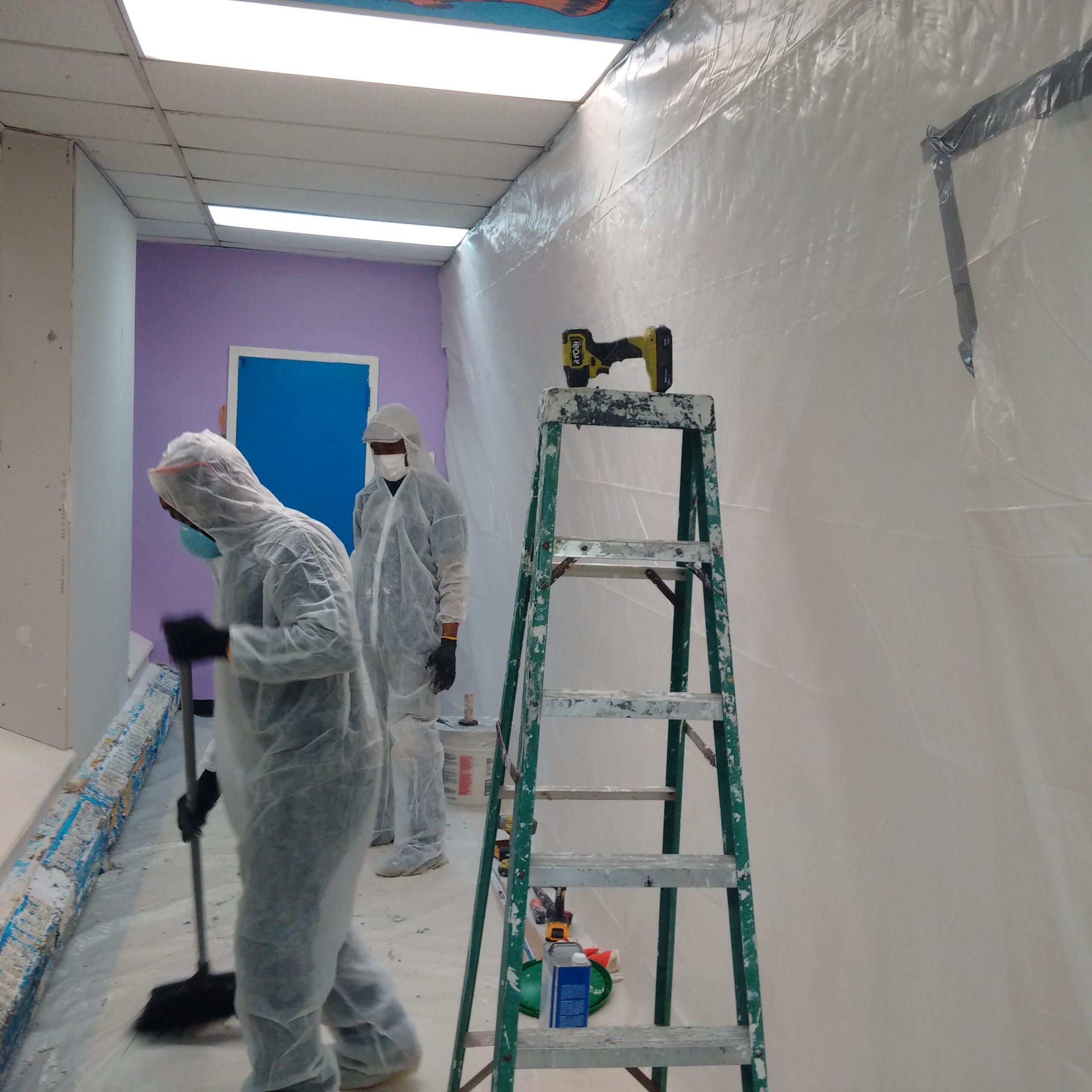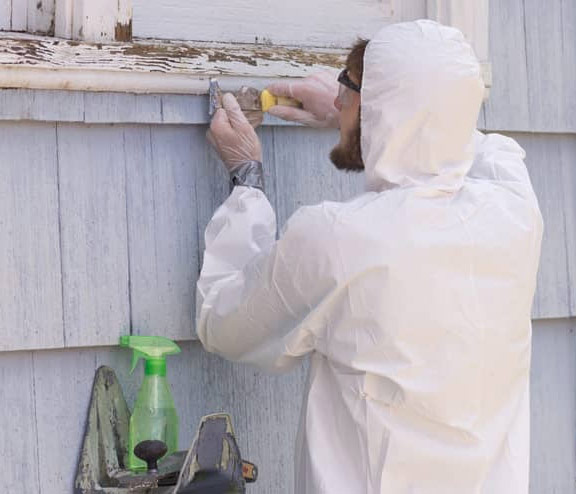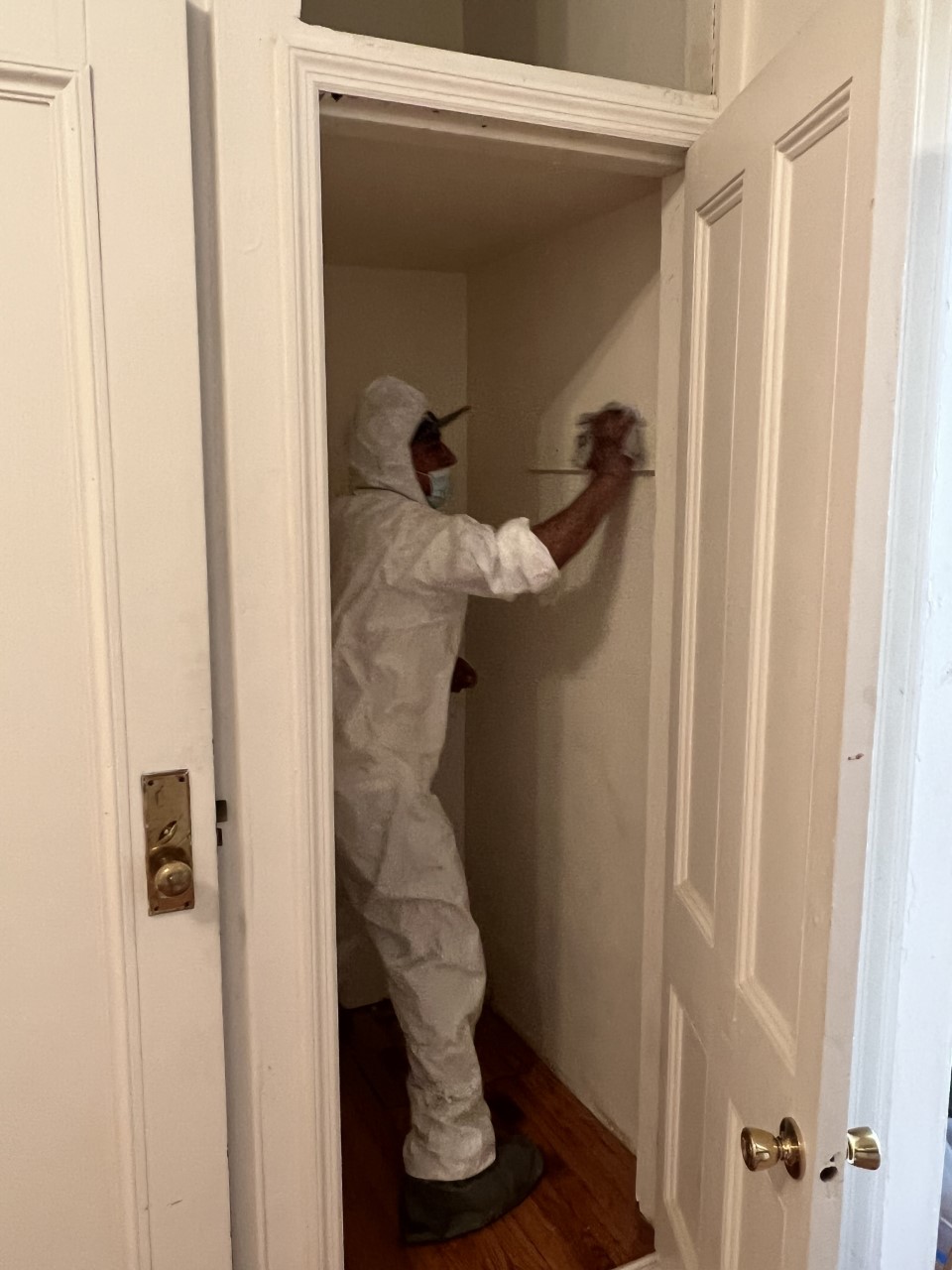Comprehensive Guide on Effective Lead Infraction Elimination Strategies
In the realm of environmental safety, attending to lead offenses requires a thorough and organized approach. This extensive guide begins by highlighting the vital preliminary actions of determining lead dangers via innovative analysis and screening approaches. Strategies such as XRF evaluation and dirt clean tasting are crucial in determining contamination resources. In addition, the overview clarifies on the value of sticking to strict security protocols during the removal procedure, consisting of the usage of appropriate PPE and isolating affected areas (Lead Paint Removal Company). The subsequent sections assure to go over post-removal confirmation and preventive strategies, making certain lasting security and compliance. Discover the detailed information that make these techniques not simply efficient but essential.
Determining Lead Threats
Determining lead threats is a vital initial step in alleviating the dangers associated with lead direct exposure. Lead, a hazardous steel, can be present in numerous ecological mediums, consisting of paint, dirt, water, and dust. It positions extreme health dangers, specifically to children and pregnant ladies, bring about neurological damage and developmental hold-ups. Specific identification of potential lead sources is necessary for reliable remediation.
The preliminary stage in determining lead dangers entails recognizing usual lead resources within the constructed setting. Frameworks developed prior to 1978 are especially prone because of the common use of lead-based paint during that period. Additionally, dirt contamination can take place from wearing away outside paint, commercial emissions, or historical use of leaded fuel.
An additional substantial resource is lead piping and plumbing fixtures, which can seep lead right into alcohol consumption water. Durable goods such as playthings, porcelains, and imported products may also have unsafe lead degrees. Significantly, work environments and leisure activities entailing lead can track pollutants into homes.
Analysis and Screening
When dealing with lead threats, efficient analysis and testing are vital. Initial evaluation generally includes an aesthetic evaluation to recognize potential lead resources, such as deteriorating paint or polluted dust.

Dirt clean tasting is an additional crucial strategy, especially in property settings. By accumulating examples from floors, windowsills, and various other surfaces, this approach offers insights into prospective direct exposure threats. Soil screening around building boundaries is necessary to spot lead contamination that might posture risks, especially to children.
Safe Elimination Procedures
Upon completing thorough evaluation and screening, applying safe removal treatments is the next crucial stage in attending to lead threats. This process guarantees that lead-contaminated products are properly and safely gotten rid of, reducing danger to both employees and residents. The primary step involves separating the damaged location utilizing plastic bed linen and proper sealing strategies to protect against the spread of lead dirt.
Workers have to wear suitable individual safety equipment (PPE), consisting of respirators, handwear covers, and disposable coveralls, to reduce exposure. Using specialized tools and damp techniques, such as wet fining sand or making use of HEPA-filtered vacuum cleaners, decreases the dispersion of lead particles. It is critical to stay clear of completely dry fining sand or unpleasant blowing up, as these you can try these out methods can generate dangerous lead dust.
Garbage disposal is one more essential part; all contaminated materials should be safely gotten and classified according go to website to EPA and regional policies. In addition, complete cleaning of the workplace with HEPA vacuum cleaners and damp wiping makes certain the removal of recurring lead particles.
Post-Removal Confirmation

Confirmation of successful lead elimination, referred to as post-removal verification, is imperative to make sure the safety and security and habitability of the remediated area. This process entails a collection of careful assessments and tests created to detect any residual lead fragments that might pose health and wellness dangers. The first action generally consists of an aesthetic examination to assess the completion and high quality of the removal job. This examination ensures that all known sources of lead have been dealt with and that no visible indications of contamination continue to be.
Following the aesthetic examination, ecological tasting is carried out. This includes gathering dust, soil, and sometimes water examples from the remediated location. Recognized labs evaluate these samples to measure lead degrees, guaranteeing they fall below the safety and security limits developed by regulatory bodies such as the Epa (EPA)
Furthermore, air high quality testing may be executed to find airborne lead particles, specifically in instances where substantial lead-based paint removal or renovation has actually happened. The outcomes of these examinations offer measurable information confirming that the lead degrees are within allowable limits.
Inevitably, post-removal verification offers as an important checkpoint, confirming the performance of the lead reduction efforts and guarding the health of passengers and site visitors.
Precautionary Steps and Upkeep

A crucial safety net includes using lead-safe licensed specialists for any kind of remodelling, fixing, or painting tasks. These professionals are learnt techniques that reduce lead dirt and particles. Additionally, click to read more keeping coloured surfaces to prevent damaging or peeling is necessary, as deteriorating paint can release lead fragments right into the environment.
Educational efforts targeting homeowner and lessees concerning the risks of lead and the relevance of reporting any potential dangers can better boost preventive efforts. Routine cleaning utilizing HEPA vacuum cleaners and damp wiping techniques can substantially minimize lead dirt buildup.
Conclusion
In summary, effective lead violation removal requires a careful technique incorporating detailed analysis, precise testing, and stringent removal procedures. Ensuring safety through proper seclusion and individual safety devices stays vital. Post-removal confirmation through environmental sampling and air quality testing confirms conformity with well-known safety and security requirements. Moreover, continuous evaluations and maintenance are vital to mitigate future lead threats, therefore guarding public health and wellness and guaranteeing sustained conformity with regulative demands.